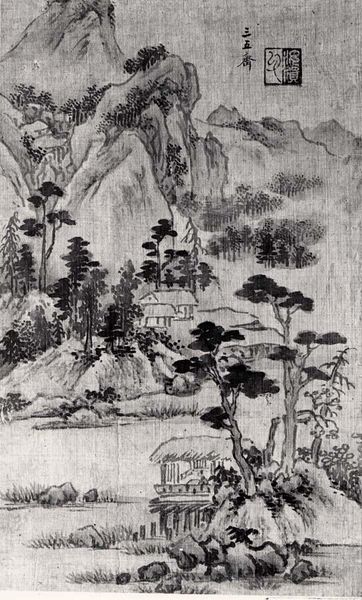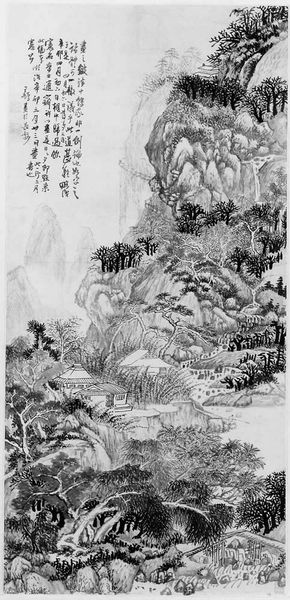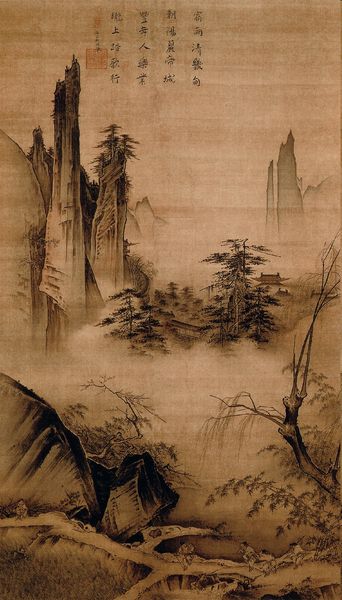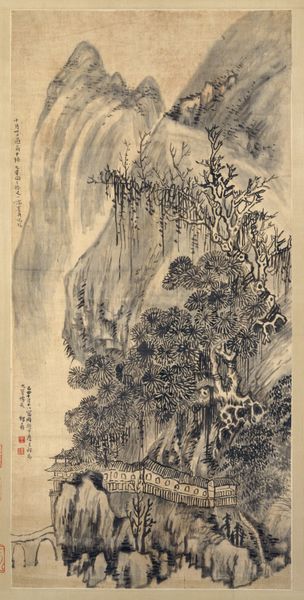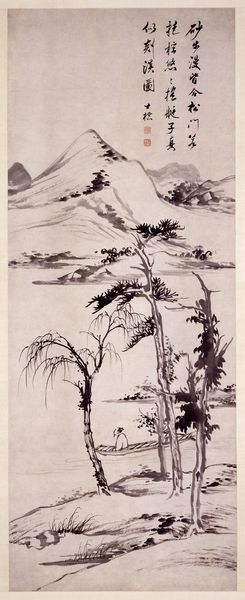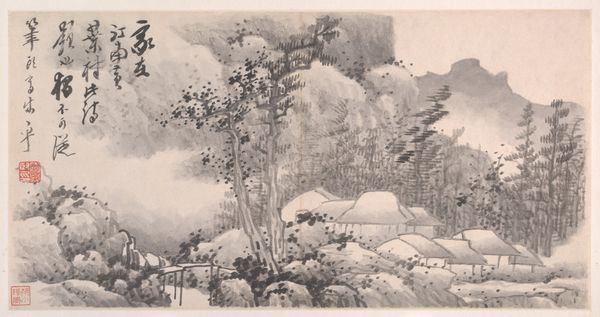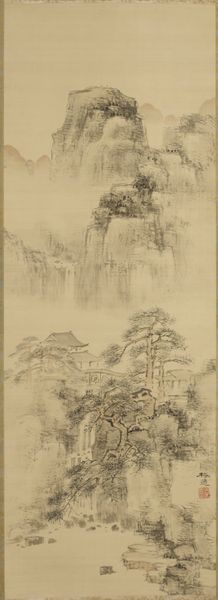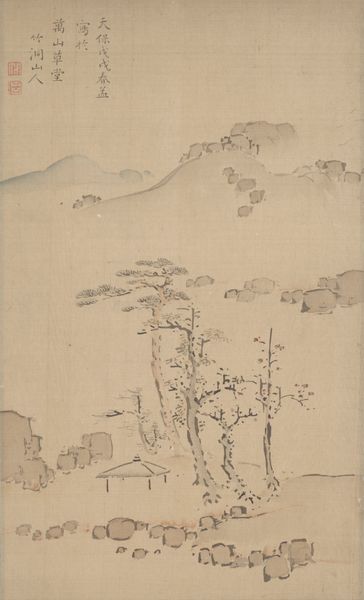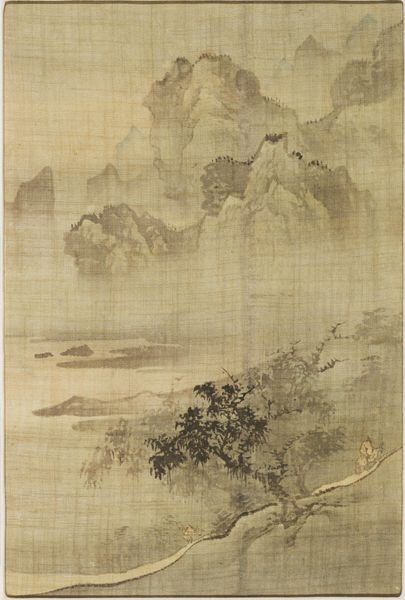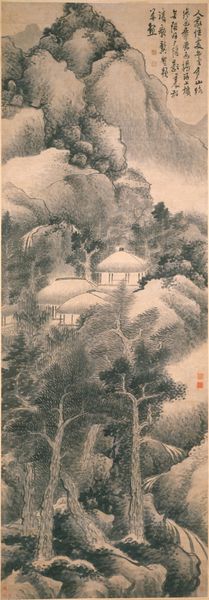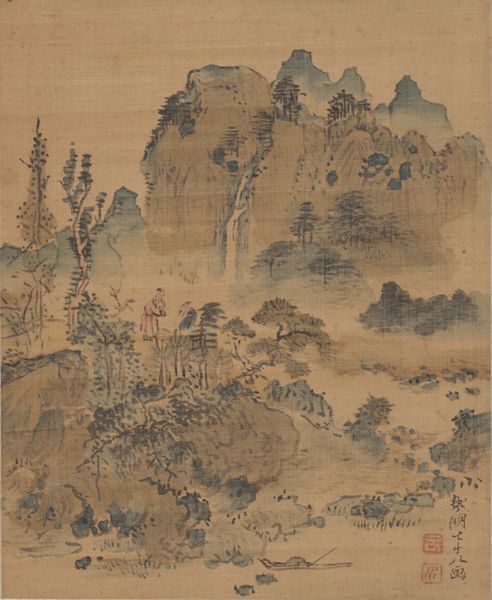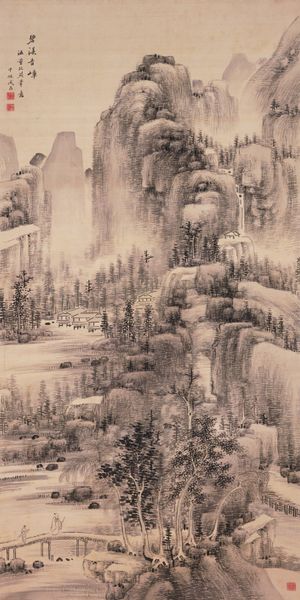
drawing, ink, pen
#
drawing
#
pen sketch
#
pencil sketch
#
asian-art
#
landscape
#
ink
#
pen-ink sketch
#
pen work
#
pen
Dimensions: 17 7/8 x 10 7/8 in. (45.4 x 27.6 cm)
Copyright: Public Domain
Editor: Here we have “Pavilion by the Lake,” an ink drawing from sometime between 1767 and 1799. It’s a landscape view, misty and peaceful, but also seems to portray some level of social hierarchy with the figures near the pavilion and others much further off in smaller buildings. How would you interpret this work within its historical context? Curator: This piece speaks to the intersection of power, nature, and representation in 18th-century landscape art. The pavilion, a space of leisure and perhaps governance, is foregrounded, but note the delicate, almost ephemeral rendering of the natural world around it. How does that contrast speak to you? Editor: It makes me wonder if the artist intended to subtly critique the separation between those in power, within the pavilion, and the common people seemingly blended into the landscape beyond. It feels intentional. Curator: Exactly. The literati during that time often used landscape painting as a form of coded social commentary. Consider the historical dynamics of land ownership and control at the time. This artwork, through its visual hierarchy and delicate touch, might subtly address the relationship between those who control resources and those who are part of the environment, quite literally, living off of it. The scale also interests me; why present nature in such an enveloping, powerful way? Editor: So, beyond just appreciating the beautiful landscape, we can consider this a reflection on social structures and potentially even a commentary on land distribution. The mist could perhaps represent the obfuscation of power. Curator: Precisely. And, in acknowledging that reading, we open ourselves to seeing art history not just as a progression of styles but as a reflection of social and political realities. Editor: That adds so many layers to my appreciation of what is present in the work itself! Curator: Indeed, and it empowers us to seek further meaning in the choices the artist made.
Comments
No comments
Be the first to comment and join the conversation on the ultimate creative platform.
